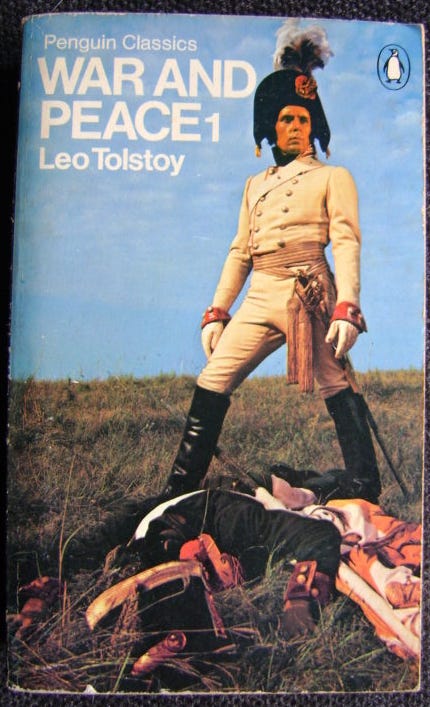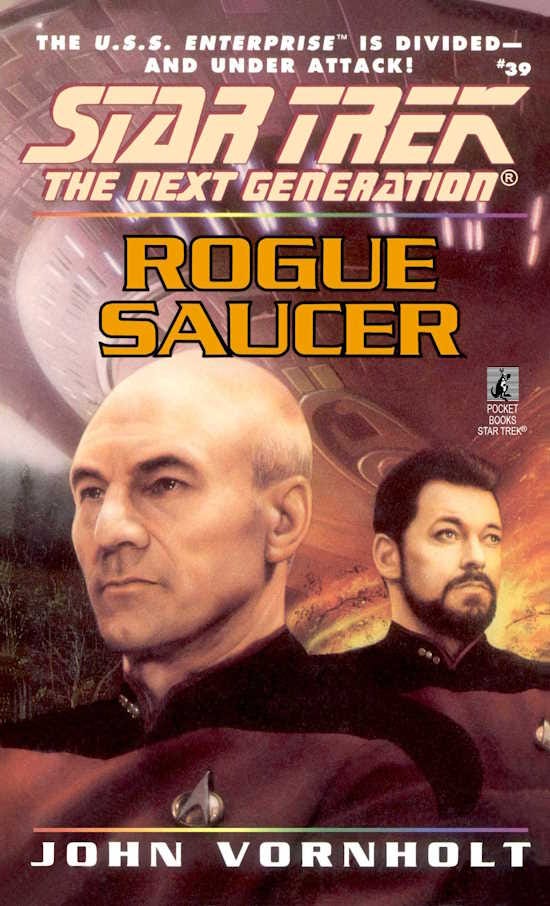Short Reviews: War & Peace & War Again
War and Peace, Rogue Saucer, Spirited Away, Wheel of Fortune & Fantasy, Being John Malkovich, and Civil War (again) (sorta)
Paid subscribers are supposed to receive “short reviews” from time to time. I keep setting out to write 500-word reviews that sprawl into 5,000-word reviews. While I am proud of those reviews, I write them too slow, so I decided to try stealing ’s review format this month to see whether that works better for me and/or my beloved subscribers. (However, Mr. Triangle’s reviews aren’t sullied by a paywall. His story-and-history substack is excellent.)
War and Peace, by Leo Tolstoy:
In Russia's struggle with Napoleon, Tolstoy saw a tragedy that involved all mankind. War and Peace broadly focuses on Napoleon’s invasion of Russia in 1812 and follows three of the most well-known characters in literature: Pierre Bezukhov, the illegitimate son of a count who is fighting for his inheritance and yearning for spiritual fulfillment; Prince Andrei Bolkonsky, who leaves his family behind to fight in the war against Napoleon; and Natasha Rostov, the beautiful young daughter of a nobleman who intrigues both men.
Review: This is a fine book. Tolstoy brings rich characters to life. They become our close intimates over the (incredible) length of the text. Tolstoy does a good job writing engaging, interweaving stories both on the battlefront and on the domestic “homefront”—although Tolstoy does tend to start ranting about 19th-century debates in historiography, which is interesting but not necessarily great novel-writing. (Also, Tolstoy is a bit of Hegelian, and Hegel is stupid.)
Yet he makes up for it, considerably, with how wide and real his characters feel. Their marriages fail (ever so slowly). They dream of battlefield glory. They make grand but ill-advised gestures and pay the price. There are triumphs and tragedies, sometimes for people who deserve them, often for people who don’t. It’s all very human. I love it.
It is easy to imagine how, in an era before long-running book series and serial television, War and Peace would have been the best thing since sliced bread.1 The only way to paint a world with this much sweep and depth was an epic novel like War and Peace, and I can see why so many regard Tolstoy as the master of the genre.
But it’s so long. Tolstoy’s brick clocks in at 587,000 words long. That’s as long as the complete Lord of the Rings… plus another 100,000 words. (LotR is 481,000 words.) It’s almost as long as Harry Potter books 1, 2, 3, 4, and 6 combined (629,000 words).2 It’s as long as the first twenty-three Animorphs books plus The Hork-Bajir Chronicles! It’s…
…somehow barely half as long as Robert Caro’s The Power Broker? so if you’re one of the elite weirdos who has both heard of that book and read it, no sweat, War and Peace will be a breeze.
For the rest of us, though War and Peace represents a big time investment. I read a lot of books at once, but War and Peace remained on my actively-reading shelf for nearly four years. It’s a very good novel, and I don’t regret reading it. It certainly could’ve been worse: I could have been suckered into starting the Game of Thrones books. (1.7 million words—and that’s before author Brandon Sanderson even finishes the series!3) Nevertheless, I strongly suspect that the years I spent reading Tolstoy could have been plowed into even more rewarding reading instead. I therefore have warm things to say about War and Peace, and I have no regrets, but I do not actually recommend it.
3 out of 5 stars: a good solid success that entertained and enlightened, with some true moments of magic that were marred by a few flaws (and a huge page count).
Who should read this? Great Books completionists; people who liked both the domestic and the military sequences in Kristin Lavransdatter; people who share Tolstoy’s rage boner for 19th-century historians
Rogue Saucer (Star Trek: The Next Generation #39), by John Vornholt:
While its own saucer section receives needed repairs, the USS Enterprise tests a new experimental saucer. In theory, the new saucer can survive a planetary crash landing, but will it come through intact under genuine test conditions? Riker, Data, Worf, and La Forge risk their lives to find out, and so does Admiral Nechayev of Starfleet. But a dangerous test turns even more deadly when hostile forces seize control of the saucer – and turn it against the Enterprise.
I very much miss the days when all Star Trek novels were numbered, like comic books, and had giant collect-them-all lists in the back. This made clear that the product was pulp fiction, intended to deliver a cheap good time. If, occasionally, you stumbled into something profound or beautiful, so much the better for being a pleasant surprise.
At some point,4 they stopped numbering them. The novels started to be connected to one another, so you couldn’t just pick one up on the train and go on a quick Star Trek adventure. No, now these were real novels, and they had to have major character developments and lingering consequences.
Keep reading with a 7-day free trial
Subscribe to De Civitate to keep reading this post and get 7 days of free access to the full post archives.





